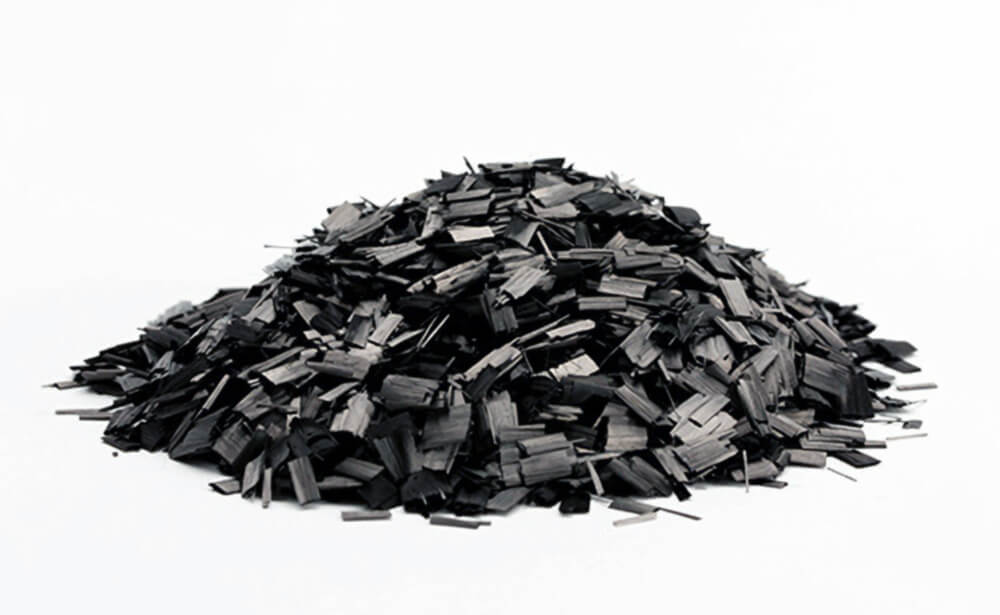
Specialize in Compression molds

Specialize in Compression molds
Short-cut fibers, such as carbon, aramid, nylon, but most commonly glass fibers, are used as reinforcing additives in sheet molding compounds (SMC) and bulk molding compounds (BMC). The short-cut fibers are mixed with resin paste in a mixer and then extruded. This article will be the most complete guide to short-cut fiber molding compounds.


Short-cut fiber molding compound is a prepreg widely used in compression molding process. It is mainly used to mold parts that require high strength, heat resistance, corrosion resistance and complex shapes. This molding compound is characterized by high fiber content (50% ~ 60%), long fibers (30 - 50mm), and generally no filler in the formulation, containing only two components: fiber and resin. To facilitate the process, a non-reactive solvent is added and most of the solvent is removed at a later stage of impregnation.
Short-cut fiber molding compounds require high molding temperatures (typically 160-170°) and high molding pressures (29-49 MPa). Depending on the fiber morphology, short-cut fiber molding compounds can be divided into bulk molding compounds, rag molding compounds and fabric (multi-directional fabric) molding compounds. Among the three types of molding compounds, bulk molding compounds are the most widely used.
The fibers are first cut short, then mixed with a certain amount of resin, torn loose, and dried to make the bulk molding compound. The bulk molding plastic generally uses glass fiber, high silica fiber and carbon fiber and two or more fiber mix as reinforcing materials. The adhesives are mostly phenolic resins, such as ammonia phenolic, barium phenolic, magnesium phenolic, and phenolic resins modified by polyvinyl butyral.
This kind of molding plastic is very loose, the fiber does not have a certain direction, compression molding material flow is good, suitable for making small size and more complex structure of the product. In thermoplastic reinforced polymers, short cut fibers provide good strength, stiffness, impact resistance and thermal stability while maintaining low cost. These properties are most commonly achieved by using glass fibers, and carbon fibers are used when the highest stiffness is required.
The large loss of fiber strength during preparation, the large specific volume of the molded plastic, the difficulty of filling the mold in compression molding, the need to design a large loading chamber in the compression mold and the need to use multiple pre-pressing procedures to close the mold. The movement stroke of the upper die is also large, so the labor conditions are not good.
There are three general methods of preparing short-cut fiber molding compounds: premixing, pre-pregging and felt dipping. The first two methods can be divided into manual premixing (dipping) method and mechanical premixing (dipping) method according to the specific requirements of the different conditions, and mechanical premixing method can be divided into batch premixing method and continuous premixing method.
Manual preparation is suitable for the preparation of small-scale development materials, while mechanical preparation method is suitable for the mass production of materials. From the point of view of the strength of the material, the manual method is generally better than the mechanical method, but the former is labor-intensive, the quality of the material is more dependent on the human.
Pre-mixing method is the first glass fiber (or other fibrous reinforcing materials) short cut, and then with a certain amount of resin fully mixed, and then dried to make molded plastics. This molding compound is characterized by loose and non-directional fibers. Premixing method of molding plastic flow better, suitable for pressing complex shape of small compression molding products, but in the preparation process of fiber strength loss, not suitable for high-strength compression molding. Pre-mixing method has manual pre-mixing method, batch machine mechanical mixing method and continuous mechanical pre-mixing method.
Prepreg method is the whole bundle of glass fiber for dipping, drying and short-cutting process methods, can be divided into manual and mechanical two. Prepreg method in addition to the manual prepreg method, generally use continuous twist-free roving. Because in the preparation process, the fiber is not as strong as in the premixing method of pinching, fluffing, tearing process of strong stirring, and thus the original strength of the fiber will not have a serious loss, and this method made of prepreg small size, easy to use, good fiber orientation, easy to directional laying press molding. The method is highly mechanized, easy to operate, less labor-intensive, simple equipment, easy to manufacture, and can be produced continuously; however, the daily output is lower than that of the premixing method, and it is only applicable to continuous fiber products (such as twist-free roving). In order to facilitate the rapid penetration of resin into the fiber bundle and the mutual solubility between the fiber bundle in the molding, there are special requirements for roving products, and the knotted tape should be small, but the fluidity of the molding plastic area is slightly worse than the mutual solubility between the bundle.
The characteristics of the dipping method are between the premixing method and the prepreg method. The molded plastics made by this method are especially suitable for thin-walled compression molded products with simple shapes and little thickness variation. The equipment used in the felt dipping method is the felt dipping machine, whose structure principle is basically the same as the prepreg machine. The difference between the process of felt dipping and prepreg method is that the short-cut glass fiber should be evenly spread on the glass backing, then covered with glass surface cloth, and then the whole sandwich layer will be dipped and dried to obtain the molding compound.
MDC is an expert in composite molding in China, and we have expertise in short cut fiber molding. Especially SMC moulding or BMC moulding
Contact US
Email: master@zjmdc.com
Tel: +86 576 84616076
Fax: +86 576 84616079
Mobile: +86 13906573507(Mr. Wang)
Address: No.116 mochuang road, Huangyan Xinqian street,Taizhou,Zhejiang,China